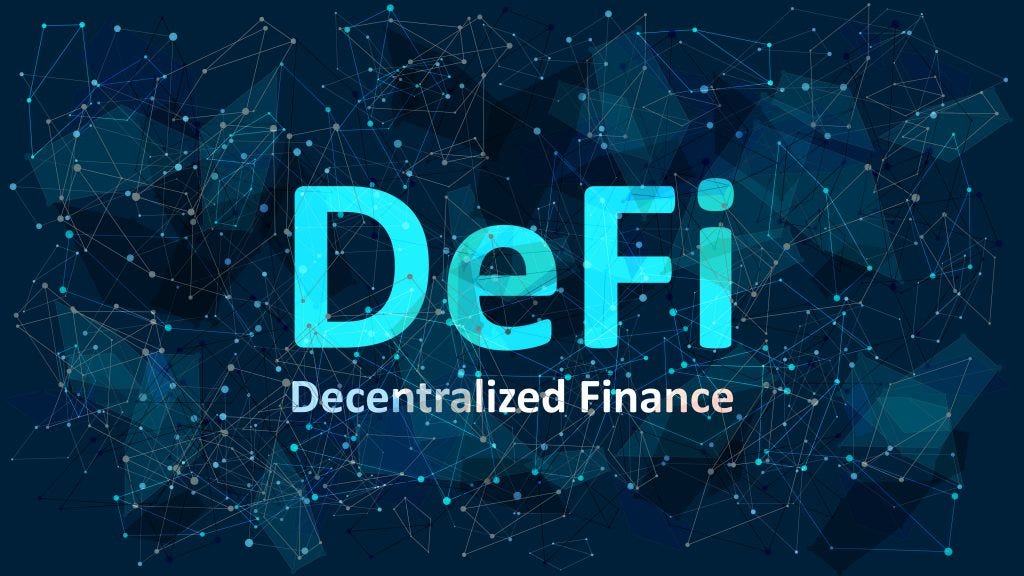The honeymoon period with decentralized finance has ended for many investors. What began as revolutionary promises of financial freedom and astronomical returns has given way to a sobering reality check. Market volatility, protocol failures, and diminished yields have left countless participants questioning whether DeFi can deliver on its foundational promises.
This disillusionment represents a natural evolution in any emerging technology sector. The initial hype cycle inevitably gives way to more measured expectations as the market matures. Rather than abandoning DeFi entirely, smart investors are learning to separate genuine innovation from speculative noise.
Understanding this transition phase becomes crucial for anyone seeking long-term value in decentralized finance. The participants who navigate this period successfully will position themselves for sustainable returns while others cycle through boom-bust patterns that erode wealth over time.
Understanding the Disillusionment Cycle
DeFi disillusionment typically follows a predictable pattern that mirrors other technology adoption cycles. Early adopters experience extraordinary returns during the initial growth phase, creating unrealistic expectations for newcomers who arrive during peak hype periods. When reality fails to match these inflated expectations, disappointment sets in rapidly.
The psychological impact extends beyond individual disappointment to affect entire market segments. Social media amplifies both the initial euphoria and subsequent frustration, creating echo chambers that reinforce negative sentiment. This emotional volatility often prevents rational analysis of underlying value propositions.
Many participants mistake temporary market conditions for permanent protocol failures. A single quarter of reduced yields or increased gas fees can trigger wholesale abandonment of strategies that might prove profitable over longer timeframes. This short-term thinking creates opportunities for patient investors who maintain broader perspectives.
Separating Hype From Fundamental Value
Sustainable DeFi value emerges from protocols that solve genuine financial problems rather than simply promising high returns. Legitimate projects address real inefficiencies in traditional finance through technological innovation, not just token appreciation speculation.
Examine the underlying utility of any DeFi protocol before considering investment. Does it reduce transaction costs, increase access to financial services, or improve capital efficiency? Protocols built around genuine utility tend to maintain relevance even during market downturns, while purely speculative projects often disappear entirely.
Community governance represents another indicator of sustainable value. Projects with active, knowledgeable communities that contribute to protocol development demonstrate organic growth potential. Contrast this with projects driven solely by marketing campaigns or influencer endorsements, which often lack the foundation necessary for long-term success.
Risk Management Beyond Portfolio Diversification
Traditional risk management advice focuses heavily on diversification, but DeFi requires additional considerations due to smart contract risks, regulatory uncertainty, and protocol governance vulnerabilities. Understanding these unique risk factors helps investors make more informed decisions about position sizing and time horizons.
Smart contract audits provide some security assurance, but they cannot eliminate all risks. Even thoroughly audited protocols can contain vulnerabilities that emerge under specific market conditions or through novel attack vectors. Limiting exposure to any single protocol, regardless of audit status, protects against catastrophic losses.
Regulatory developments pose ongoing challenges that traditional investments rarely face. DeFi protocols operate in legal gray areas that could change dramatically with new legislation or enforcement actions. Staying informed about regulatory trends helps investors anticipate potential disruptions before they impact portfolio values.
Identifying Genuine Innovation Amid Market Noise
Real DeFi innovation often appears boring compared to flashy new token launches or viral social media campaigns. Incremental improvements to existing protocols, enhanced security measures, and improved user experiences represent meaningful progress even when they don’t generate headlines.
Focus on protocols that demonstrate consistent development activity rather than marketing-heavy announcements. GitHub repositories, developer activity metrics, and technical documentation quality provide better indicators of long-term viability than social media engagement or token price performance.
Cross-chain interoperability solutions represent one area where genuine innovation continues despite market skepticism. Protocols that enable seamless asset transfers between different blockchain networks address real user needs and position themselves for growth as the multi-chain ecosystem matures.
Building Sustainable DeFi Strategies
Successful long-term DeFi strategies prioritize sustainability over maximum returns. This approach requires accepting lower yields in exchange for reduced risk and greater capital preservation. The goal shifts from beating every market cycle to maintaining steady growth over multiple cycles.
Dollar-cost averaging into established protocols reduces timing risk while building positions during periods of reduced market enthusiasm. This strategy works particularly well during disillusionment phases when quality protocols trade at discounts to their fundamental value.
Yield farming strategies should focus on established protocols with proven track records rather than chasing the highest advertised returns. Sustainable yields typically range from modest single digits to low double digits, far below the triple-digit returns promised by newer, riskier protocols.
The Role of Education in Value Discovery
Continuous learning becomes essential for identifying genuine value amid market volatility and changing conditions. The DeFi landscape evolves rapidly, with new protocols, mechanisms, and opportunities emerging regularly. Investors who commit to ongoing education maintain advantages over those who rely on outdated information or social media speculation.
Technical understanding doesn’t require becoming a blockchain developer, but basic comprehension of how protocols generate returns helps evaluate sustainability. Understanding concepts like total value locked, protocol fees, and tokenomics enables more informed decision-making about where to allocate capital.
For investors serious about building sustainable DeFi portfolios, DigitaFin provides comprehensive resources and analysis tools designed to help navigate the complexities of decentralized finance with greater confidence and clarity.
Regulatory Considerations and Compliance
The regulatory landscape for DeFi continues evolving as governments worldwide develop frameworks for digital assets and decentralized protocols. Staying compliant with existing regulations while preparing for future changes protects investors from legal complications that could affect portfolio values.
Tax obligations for DeFi activities often exceed those of traditional investments due to the frequency of transactions and complexity of yield generation mechanisms. Proper record-keeping and professional tax advice become essential for anyone with significant DeFi exposure.
Geographic considerations also affect DeFi participation as different jurisdictions implement varying regulatory approaches. Understanding local laws and restrictions helps investors avoid protocols that might become inaccessible or illegal in their location.
Market Timing vs. Time in Market
The disillusionment phase creates unique opportunities for investors who can resist emotional decision-making. While others panic-sell during market downturns, patient investors can accumulate positions in quality protocols at attractive valuations.
However, attempting to time exact market bottoms often proves counterproductive. Consistent investment over time, regardless of short-term market sentiment, typically produces better results than waiting for perfect entry points that may never materialize.
Bear markets in DeFi provide opportunities to learn about protocols without the pressure of rapidly changing prices and FOMO-driven decision-making. This quieter environment allows for more thorough research and strategic planning that pays off during subsequent growth phases.
Building Long-Term Wealth Through DeFi
Sustainable DeFi wealth building requires patience, education, and disciplined risk management. The most successful participants treat DeFi as a long-term investment category rather than a get-rich-quick scheme or short-term trading opportunity.
Focus on protocols that generate real economic value through improved financial services rather than those dependent on constant new user growth or token price appreciation. Sustainable business models translate to sustainable returns over time.
Remember that disillusionment phases are temporary but necessary parts of market maturation. The investors who persist through these challenging periods, while maintaining appropriate risk management, position themselves to benefit from the next growth cycle with stronger fundamentals and reduced speculative excess.
The future of DeFi likely belongs to protocols that combine genuine utility with sustainable economics. By focusing on these fundamentals rather than short-term market movements, investors can navigate the current disillusionment phase and build lasting value in the decentralized finance ecosystem.








How Open Banking APIs Are Revolutionizing Digital Finance?
Cross-Border Payment Solutions for Businesses – What SMBs Should Know
What Is a Fintech App? Everything You Need to Know
What Is FinTech? A Beginner’s Guide to the Finteching 2025
Digital Twin Technology in Finance: How Virtual Models Are Transforming Risk Management
The Future of Personal Finance: Autonomous Finance and AI Money Management
AI Credit Scoring: Revolutionizing SME Banking and Digital Loans
AI Fraud Detection: How Banks Prevent Financial Crime in Real Time